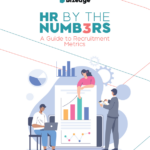
8 essential steps on how to Attract Top Talent

Want to Hire Top Talent Faster?
Employee onboarding begins the moment a candidate says ‘yes!
New hires are excited and ready to hit the ground running the moment they accept your offer. To build a strong working relationship, it’s crucial to design an onboarding process that empowers them to work independently. This mutual commitment leads to the positive ROI you expect from your recruitment investments.
Keeping new hires engaged is vital for retention, and this employee-company connection continues well beyond recruitment. Effective onboarding includes celebrating small wins and regular check-ins to assess engagement levels, allowing for timely adjustments.
To truly maximize the benefits of seasonal hiring, you need to go beyond the basics. Strong onboarding, a smooth interview process, well-crafted job postings, and consistent communication are essential for attracting top seasonal talent. When done right, you’ll cultivate satisfied employees and a dependable talent pool for years to come.
Refrain from neglecting this process, and you risk wasting time, and money, and even damaging your reputation. With Homebase, you can simplify the hiring and onboarding of seasonal employees, helping your entire team grow and thrive.
What is onboarding?
Employee onboarding is the process by which you welcome new people into your company.
The employee onboarding process is a chance for you to help newbies settle in, learn more about your culture, ask questions, and understand their responsibilities. It’s part of a broader talent acquisition trend of companies putting people first.
Positive onboarding experiences help people feel more comfortable and confident. After all, employees’ first impression of your company determines their long-term future with you.
What does onboarding look like in practice?
Onboarding takes place at the start of the employee life cycle and lasts for as long as it takes to help your new hires get accustomed to their roles and responsibilities, which is different from job to job.
Low-skill jobs have short onboarding periods of a few days or weeks, but onboarding for certain high-skill jobs can take up to a year or more. The employee needs time and support to operate expertly and independently.
Why are onboarding best practices important?
Employee onboarding best practices are important because they show candidates you care about their experience, morale, and performance. You’re doing more than merely showing someone to a desk and tossing them an employee handbook. A positive onboarding experience ensures your new hires have everything they need to join the team and any extra support they need afterward.
Disorganized onboarding processes are frustrating. A clear, concise onboarding experience is not just good PR for recruiters – it helps inspire workers to feel happier and be more productive.
A clear onboarding checklist or roadmap reassures new hires, giving them the confidence to get started in their new roles. Even if questions remain after onboarding, they should feel empowered to reach out and ask for support.
The difference between a positive and a negative onboarding process is that a negative experience results in frustrated hires that need lots of hand-holding after onboarding, resulting in quiet quitting and negative reviews.
If you’re disorganized and there’s no clear sign of ownership or improvement, employees may feel neglected and look for work elsewhere.
A good onboarding process should provide recruits with what they want and need as soon as possible.
The benefits of using the best onboarding practices
Let’s consider a few of the long-term benefits of upgrading how you welcome employees to your firm.
- Improve your firm’s reputation and attract high-quality talent
It’s an introduction to your company that drives talent into your pool through positive word of mouth.
Employees who are impressed by their onboarding could share what they’ve been through on social media and their professional networks, enhancing their employer branding. Your employer brand is the reflection of your company values and how you support your team. Unlike your corporate identity, which presents a complete company image to the public, an employer brand sells your workplace, your culture, and your management to potential candidates.
Up to 58% of people prioritize looking for jobs where they can express their skills and do what they’re good at – and you can demonstrate how that’s possible through a detailed, supportive new hire orientation.
- Keep employees engaged.
Worker productivity increases when they know what to do. Companies using a standard onboarding framework that outlines company policies are likely to boost productivity in their new hires by more than 70%.
Onboarding programs introduce different elements of a firm to a new hire a little at a time. This way, an employee’s first day is more like filling a bathtub than being dumped in the ocean. Learning the ropes at a reasonable rate is the best way to maximize employee engagement without making them feel overwhelmed.
They get to enjoy the culture, meet the team, have one-on-one meetings with managers, and train on systems at a healthy pace.
- Reduce turnover
Positive onboarding practices don’t just attract talented employees, they keep them from leaving. Your onboarding sets the tone and expectations for your employer style early on. Research shows strong onboarding experiences boost retention rates by up to 82%.
People are likely to judge how you run your business and the work environment you foster based on the first month of employment. Recruits care deeply about how you treat them, regardless of salary. Data shows up to 82% of people think it’s important companies value their human needs rather than just see them as means to an end.
7 Onboarding Best Practices to Attract Top Talent
Ready to enhance your onboarding process and boost your employer brand? Here are seven proven strategies to draw in exceptional talent and create a welcoming atmosphere for new hires.
1. Kick Off with Preboarding Start engaging with new hires before their first day! Preboarding involves completing essential paperwork and providing a guide on what to expect. This early interaction helps build trust and ease anxiety. Consider setting up access to communication channels and hosting virtual introductions to foster connections from day one.
2. Utilize Skills Assessments Get to know your candidates better with skills tests early in the hiring process. These assessments reveal strengths, weaknesses, and training needs, providing a clearer picture than resumes alone. This data not only shapes personalized development plans but also reassures new hires that they’re joining a company invested in their growth.
3. Implement a Mentoring Program Pair new hires with mentors to boost confidence and job satisfaction. Research shows that 91% of mentees are happy in their roles. Choose mentors who align with new employees’ career goals, enhancing their understanding of your company culture and providing valuable insights.
4. Create a Structured Onboarding Checklist A well-organized onboarding checklist clarifies tasks and meetings, making the transition smoother for new hires. This tool fosters open communication and helps integrate employees into your culture seamlessly. It sets the stage for productivity and autonomy right from the start.
5. Showcase Your Company Culture Introduce new employees to your vibrant workplace culture. Allow them to shadow colleagues or participate in team activities to immerse themselves in your values. Remember, over half of job seekers prioritize culture over salary, so making a strong impression can enhance your reputation as an employer of choice.
6. Make the First Day Memorable Avoid a dull first day! Set up workspaces in advance, provide tours, and organize team-building activities. A dynamic and structured first day helps keep new hires engaged and excited about their roles. Tailor experiences to match their learning styles for a truly inclusive onboarding.
7. Connect Onboarding with Offboarding Don’t forget about the offboarding process! Ending on a positive note can leave a lasting impression. Whether employees are leaving voluntarily or involuntarily, a respectful farewell can lead to potential future collaborations or rehires.
Summary:
You can attract and retain top talent while building a positive employer reputation. Start transforming your onboarding experience today. If you’re planning to hire this year, partnering with us can be highly beneficial in several key areas.
Simplify your hiring process with the BizEdge Recruiting App
